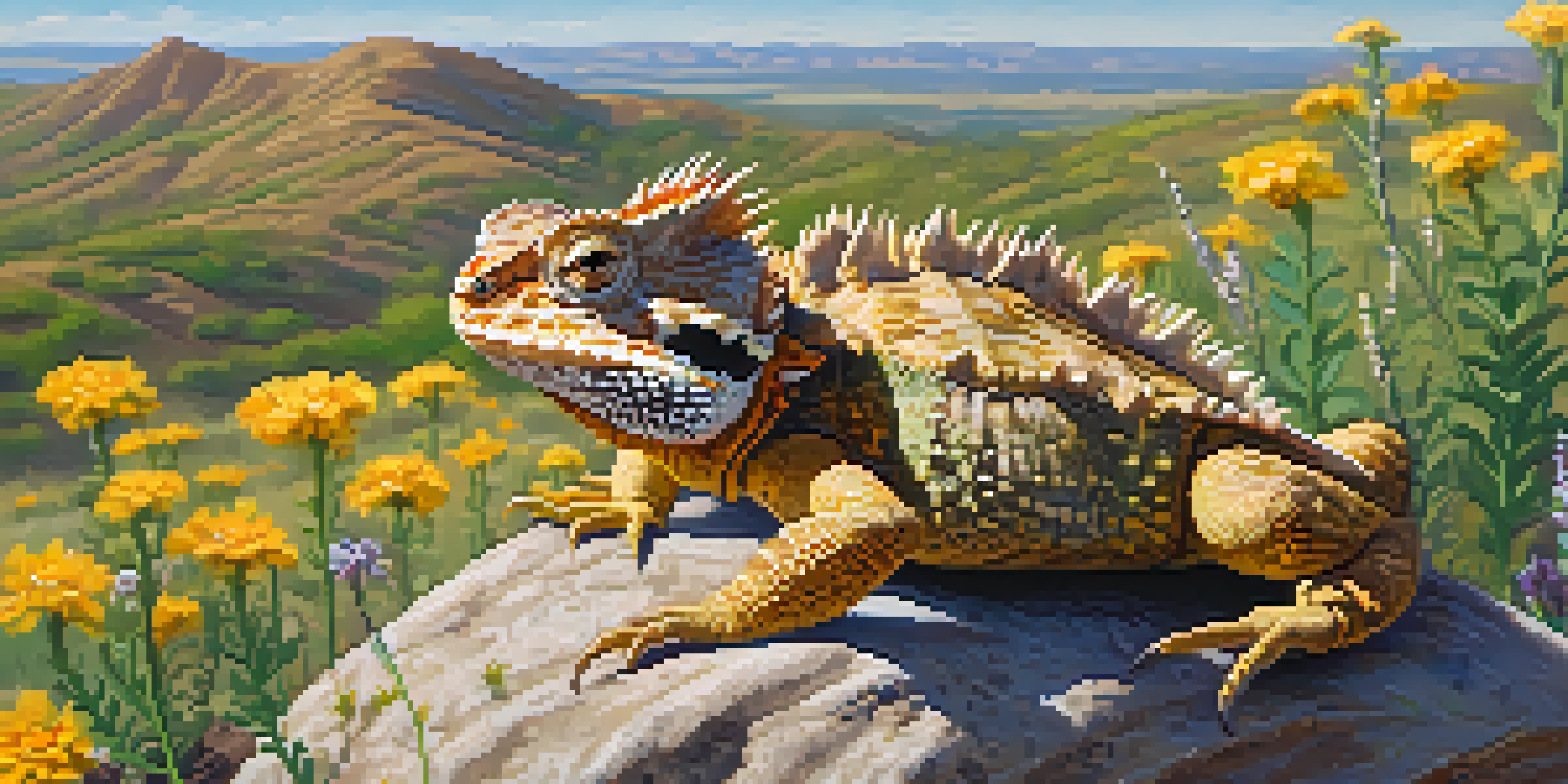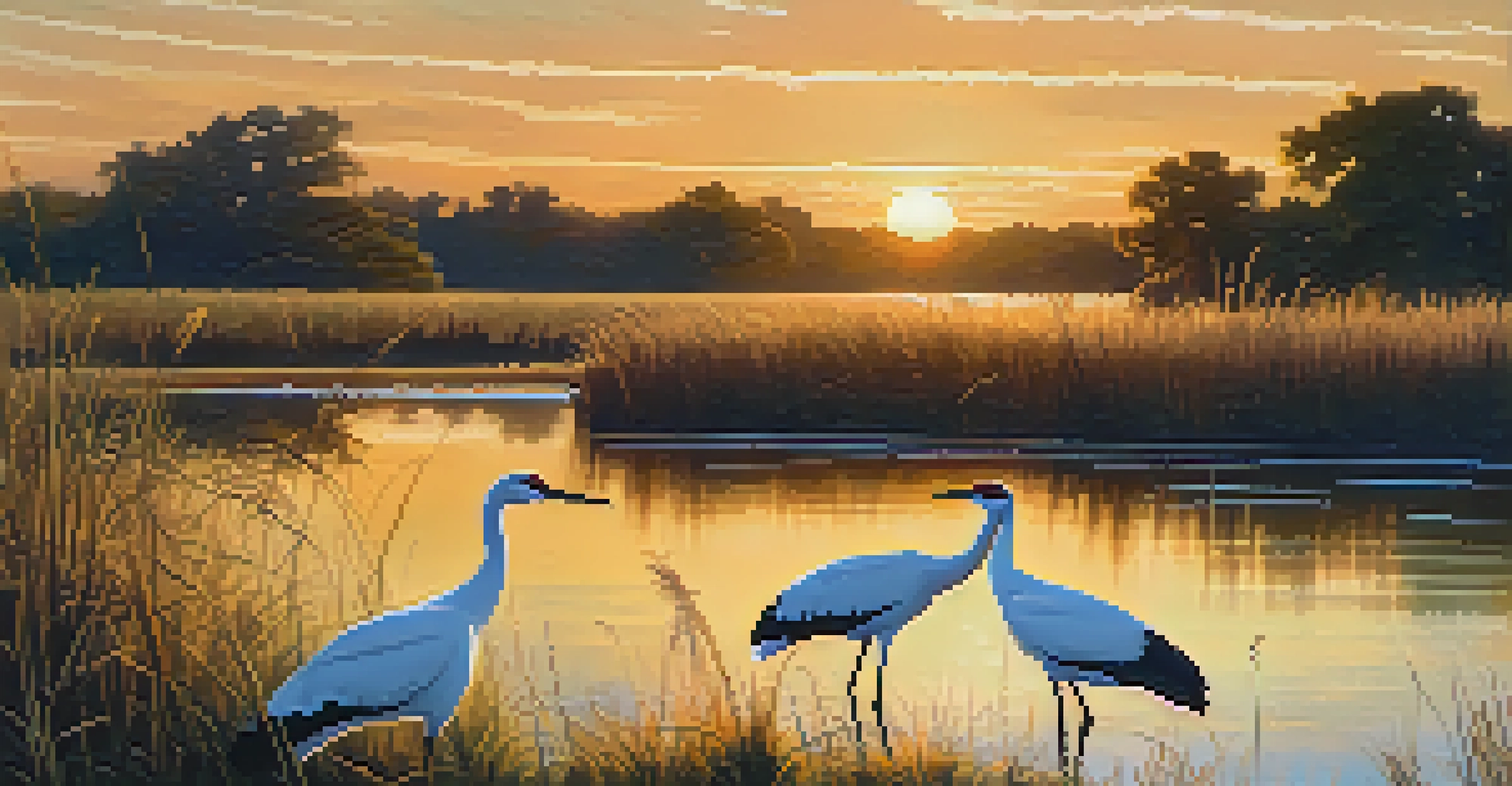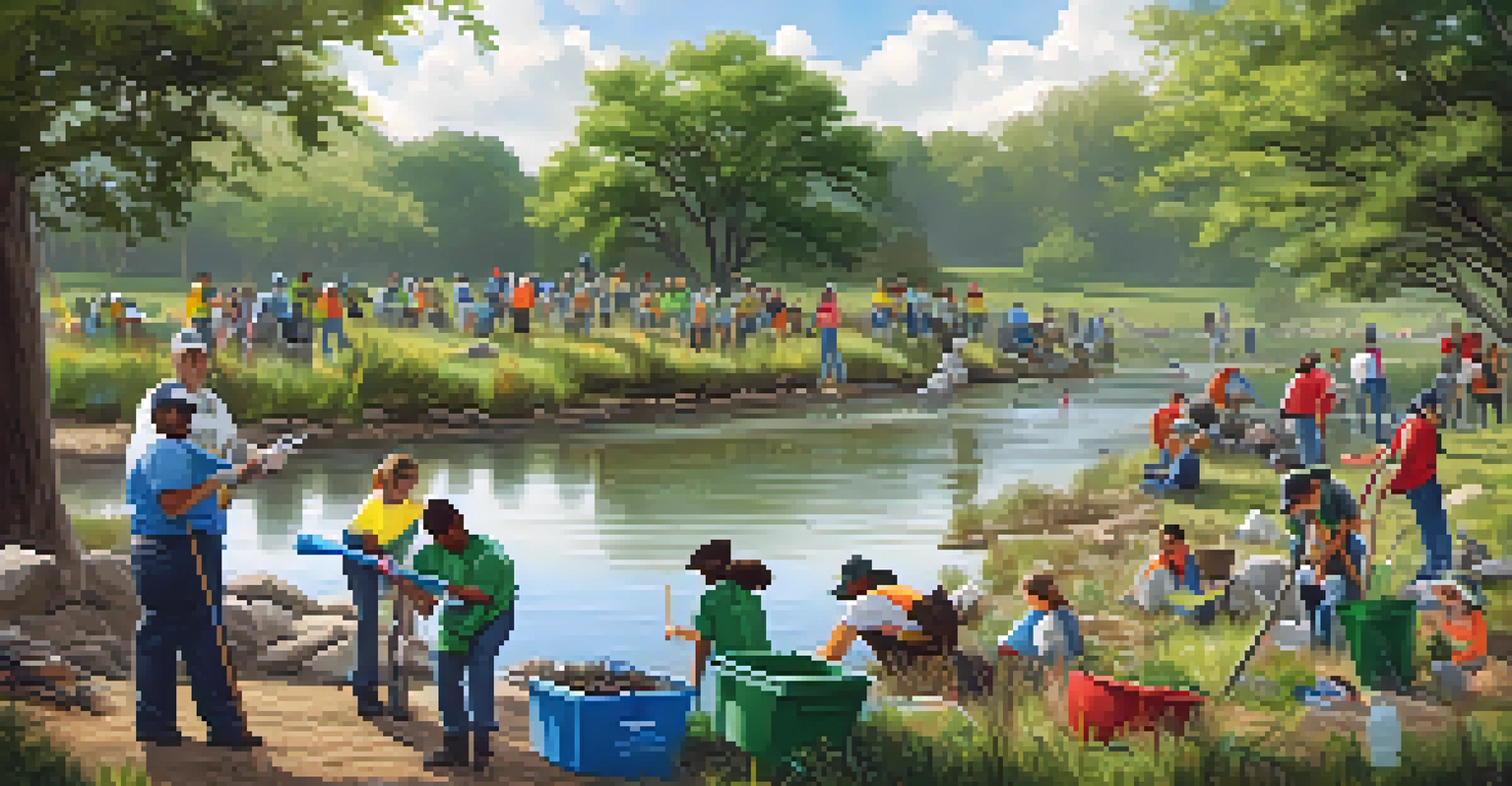Education and Awareness: Texas's Role in Wildlife Protection

Understanding the Importance of Wildlife Protection
Wildlife protection is essential for maintaining biodiversity and ecosystem health. In Texas, a state rich in diverse habitats, the need to safeguard wildlife is particularly crucial. Protecting wildlife ensures that future generations can enjoy the natural beauty and ecological balance that these species provide.
The future will be shaped by the decisions we make today about how we protect our wildlife and natural spaces.
Texas hosts a wide range of species, many of which are unique to the region. These species, from the majestic Texas Horned Lizard to the endangered Whooping Crane, play a vital role in their ecosystems. Conservation efforts help sustain these populations, which in turn supports the overall health of the environment.
Education and awareness about wildlife protection encourage individuals to take action. By understanding the significance of each species and their habitats, Texans can become advocates for conservation. This collective effort is vital for preserving the state's natural heritage.
Texas Parks and Wildlife Department Initiatives
The Texas Parks and Wildlife Department (TPWD) spearheads many initiatives aimed at wildlife protection. Through education programs, they engage citizens in conservation efforts, making them aware of local wildlife and their habitats. These initiatives often include workshops, seminars, and community events that foster a sense of responsibility towards nature.

In addition to educational outreach, TPWD also focuses on restoring habitats and protecting endangered species. They work collaboratively with various stakeholders, including local communities, schools, and conservation organizations. This multi-faceted approach not only raises awareness but also directly contributes to the preservation of wildlife.
Wildlife Protection is Vital
Safeguarding wildlife is essential for maintaining biodiversity and ensuring future generations can enjoy Texas's natural beauty.
Moreover, TPWD provides resources and tools for educators, enabling them to teach students about wildlife protection. These resources include lesson plans, interactive activities, and field trips to parks and nature reserves. Such educational opportunities cultivate a deeper understanding and appreciation for wildlife among young Texans.
Community Engagement in Wildlife Conservation
Community engagement plays a crucial role in wildlife conservation efforts in Texas. Local organizations often host events that bring people together to learn about and protect their natural surroundings. From clean-up drives to wildlife monitoring programs, these initiatives create a sense of unity and shared purpose among residents.
In every walk with nature, one receives far more than he seeks.
One example is the Texas Master Naturalist program, which trains volunteers to educate others about the state's natural resources. These trained volunteers often lead workshops and nature walks, sharing their knowledge and passion for wildlife with community members. This hands-on approach not only benefits the environment but also strengthens community bonds.
Furthermore, engaging local communities fosters a culture of conservation. As individuals become more involved in protecting wildlife, they are likely to inspire others to join the cause. This ripple effect amplifies the impact of educational initiatives, creating a community that actively supports wildlife protection.
The Role of Education in Schools
Educational institutions in Texas play a pivotal role in raising awareness about wildlife protection. Many schools incorporate environmental education into their curricula, teaching students about local ecosystems and the importance of conservation. This foundational knowledge empowers students to become advocates for wildlife from a young age.
Field trips to nature reserves and parks allow students to experience wildlife up close, fostering a personal connection to the environment. These experiential learning opportunities help students understand the delicate balance within ecosystems and the impact of human activities on wildlife. Such experiences can ignite a lifelong passion for conservation.
Community Engagement Drives Change
Local organizations and programs foster community involvement, creating a united effort towards wildlife conservation in Texas.
Moreover, partnerships between schools and conservation organizations enhance educational efforts. Programs that connect classrooms with wildlife experts provide students with valuable insights and real-world applications of their studies. By integrating wildlife protection into education, Texas is nurturing the next generation of conservationists.
Utilizing Technology for Awareness Campaigns
In today's digital age, technology plays a significant role in wildlife protection awareness campaigns. Social media platforms allow organizations to reach wider audiences and share important information about conservation efforts. Whether it’s through engaging posts or informative videos, technology helps capture the attention of diverse groups.
Online campaigns can mobilize communities and encourage participation in local wildlife conservation efforts. For instance, virtual events and webinars have become popular ways to engage people, especially during times when in-person gatherings are limited. These digital platforms make wildlife education accessible to more individuals across Texas.
Moreover, apps and websites dedicated to wildlife observation enable citizens to report sightings and track species populations. This citizen science approach not only fosters community involvement but also generates valuable data for researchers and conservationists. By leveraging technology, Texas is enhancing its commitment to wildlife protection.
The Impact of Wildlife Protection on Local Economy
Wildlife protection doesn't just benefit the environment; it also supports Texas's economy. Ecotourism, which focuses on responsible travel to natural areas, has grown significantly in recent years. Nature enthusiasts flock to Texas to experience its rich wildlife and stunning landscapes, contributing to local businesses and economies.
Beyond ecotourism, protecting wildlife can enhance agricultural practices. Healthy ecosystems support pollinators and natural pest control, which are vital for crop production. By promoting biodiversity, Texas farmers can improve yields and maintain sustainable practices, benefiting both the environment and their livelihoods.
Education Nurtures Future Advocates
Integrating wildlife protection into school curricula empowers students to become passionate advocates for conservation.
Furthermore, the conservation of natural resources attracts investment and development opportunities. Areas known for their wildlife and natural beauty often see an increase in property values and community investments. By prioritizing wildlife protection, Texas is not only safeguarding its natural heritage but also ensuring economic prosperity.
Challenges Ahead for Wildlife Protection in Texas
Despite the significant strides made in wildlife protection, Texas faces ongoing challenges. Habitat loss due to urban development and agricultural expansion poses a serious threat to many species. As cities grow and land is converted for other uses, wildlife finds it increasingly difficult to thrive.
Climate change is another pressing issue impacting wildlife across Texas. Changes in temperature and weather patterns can disrupt migration routes and breeding cycles, placing additional stress on vulnerable species. Addressing these challenges requires a collective effort from citizens, policymakers, and conservation organizations.

To combat these challenges, continued education and advocacy are essential. By raising awareness about the threats facing wildlife, Texans can mobilize support for sustainable practices and policies. Together, they can work towards creating a future where both wildlife and communities can coexist harmoniously.